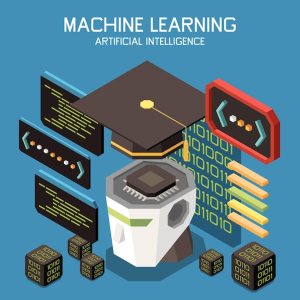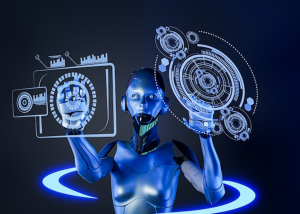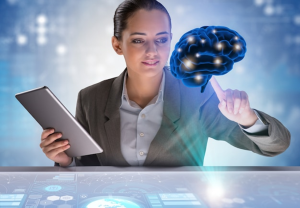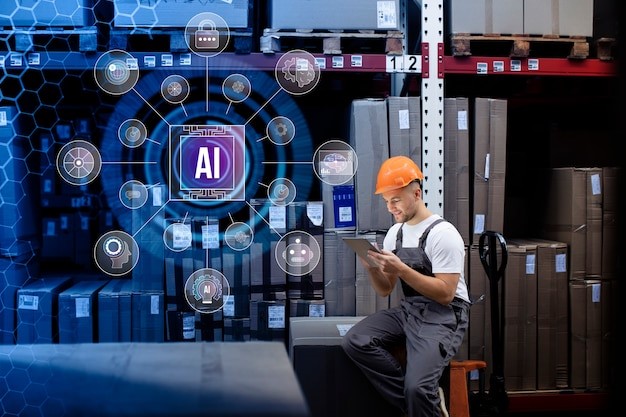In today’s fast-paced technological landscape, the world of software development is constantly evolving. Developers are always on the lookout for innovative ways to streamline their processes, improve efficiency, and create cutting-edge applications. One of the most transformative advancements in recent years has been the integration of Artificial Intelligence (AI) and Machine Learning (ML) into the software development process. In this article, we will delve into the profound impact of AI and ML on modern software development.
Software development has come a long way from the days of manual coding and debugging. The advent of AI and ML has revolutionized the way applications are conceptualized, built, and maintained. This article will explore the multifaceted role of AI and ML in modern software development, from automating repetitive tasks to enhancing security.
Understanding AI and ML
What is Artificial Intelligence?
Artificial Intelligence refers to the simulation of human intelligence in machines, enabling them to think, reason, and make decisions. AI systems can analyze data, recognize patterns, and adapt to changing circumstances, making them invaluable in software development.
What is Machine Learning?
Machine Learning is a subset of AI that focuses on developing algorithms that allow machines to learn from and make predictions or decisions based on data. It’s the driving force behind many AI applications.
AI and ML in Software Development

Automating Repetitive Tasks
AI and ML can automate mundane and repetitive coding tasks, freeing up developers to focus on more creative and complex aspects of software development. For instance, code generation tools can write boilerplate code, significantly reducing development time.
Enhancing User Experience
The integration of AI-powered chatbots and virtual assistants has transformed user interactions. These intelligent systems can provide real-time assistance, answer queries, and personalize user experiences, leading to higher customer satisfaction.
Predictive Maintenance
Incorporating AI and ML into software allows for predictive maintenance. Systems can analyze data from sensors and predict when components are likely to fail, enabling proactive maintenance, reducing downtime, and saving costs.
Improved Security
AI-driven security solutions can identify and mitigate threats in real-time. Machine Learning algorithms can detect unusual patterns and behaviors, making it easier to protect applications from cyberattacks.
The Development Lifecycle with AI and ML

Planning and Requirement Analysis
AI can assist in analyzing market trends and user behavior data to refine project requirements. ML algorithms can predict user preferences, helping in feature prioritization.
Design and Prototyping
AI tools can generate design suggestions based on user input, streamlining the design phase. Prototyping becomes more efficient as AI can provide real-time feedback on design choices.
Development
Developers can utilize AI to automate code testing, detect bugs, and optimize code for performance. These speeds up development and enhances code quality.
Testing and Quality Assurance
AI-powered testing tools can simulate user interactions, identify bugs, and provide insights into application performance under various conditions.
Deployment and Monitoring
AI and ML enable continuous monitoring of deployed applications. Anomalies and performance issues can be addressed promptly, ensuring a smooth user experience.
Real-world Examples
Chatbots and Virtual Assistants
Companies like Amazon and Apple have integrated chatbots and virtual assistants into their software ecosystems. These AI-driven entities assist users with tasks, answer questions, and provide personalized recommendations.
Personalized Recommendations
E-commerce platforms use AI to analyze user behavior and make product recommendations. This enhances user engagement and drives sales.
Image and Speech Recognition
AI and ML have made significant strides in image and speech recognition. Applications like facial recognition for security and voice-controlled interfaces are becoming increasingly common.
Challenges and Considerations

Data Privacy and Ethics
As AI collects and analyzes vast amounts of user data, concerns about privacy and ethics arise. Developers must prioritize data security and transparency.
Skills and Training
Developers need to acquire AI and ML skills to leverage these technologies effectively. Training and upskilling programs are essential in this evolving field.
Integration Complexities
Integrating AI into existing software can be complex. Compatibility issues and the need for seamless integration must be addressed.
The Future of Software Development

The integration of AI and ML will continue to shape the future of software development. As these technologies mature, we can expect even greater automation, enhanced user experiences, and improved security in software applications.
AI and ML have become integral components of modern software development. They optimize processes, elevate user experiences, and bolster security. To stay competitive in this rapidly evolving field, developers and organizations must embrace and harness the power of AI and Machine Learning.
FAQs
How do AI and ML improve software development?
AI and ML automate tasks, enhance user experiences, predict maintenance needs, and improve security in software development.
Are there any ethical concerns regarding AI in software development?
Yes, data privacy and ethical considerations regarding AI’s use in software development are significant concerns that developers need to address.
What skills do developers need to work with AI and ML?
Developers need skills in programming, data analysis, and machine learning algorithms to effectively work with AI and ML technologies.
Can small businesses benefit from AI in software development?
Yes, AI can benefit small businesses by automating tasks, improving customer interactions, and enhancing security.
What are some emerging trends in this field?
Emerging trends include the use of AI in edge computing, the rise of AI-driven DevOps, and increased adoption of AI in cybersecurity.
In conclusion, AI and ML are ushering in a new era of software development, one that is characterized by efficiency, innovation, and enhanced user experiences. Embracing these technologies is not just an option but a necessity for those looking to thrive in the software development landscape of the future.

